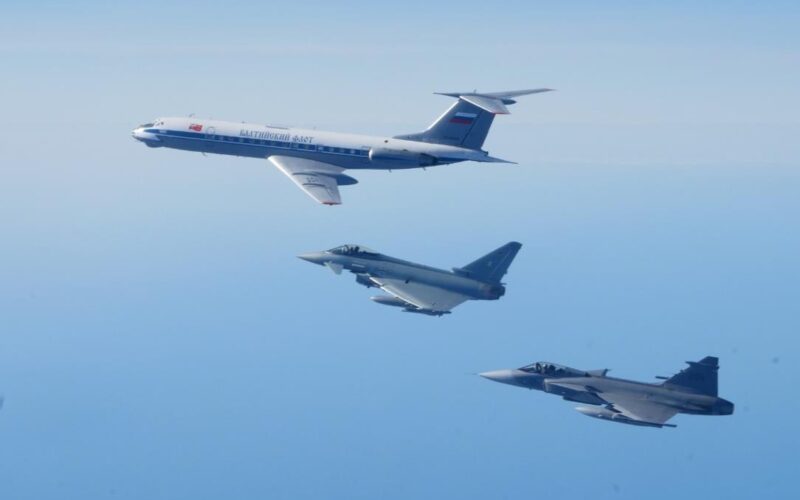Swedish JAS-39 Gripen fighters conducted their first NATO interception since Sweden became a full-fledged member of the alliance.
On March 11, 2024, NATO’s Combined Air Operations Center at Uedem detected an unidentified track over the Baltic Sea, which led to the launch of Swedish JAS-39 Gripen fighters from Sweden and Belgian F-16 jets from Šiauliai Air Base, Lithuania. The mission resulted in the visual identification of a Russian Tu-134 airliner that was not on a flight plan.
Later the same day, NATO radar screens detected another unidentified flight, leading to German Quick Reaction Alert Eurofighter Typhoons launching from Lielvarde Air Base, Latvia, along with Swedish JAS-39 Gripen jets. The mission resulted in the visual identification and escort of a Russian military aircraft, an An-26 transport plane.
🇸🇪 Gripen prove their already integrated with their intercept today of a 🇷🇺 AN-29 & TU-134 together with 🇧🇪 F-16 & 🇩🇪 Eurofighters
— NATO Air Command (@NATO_AIRCOM) March 11, 2024
Across #NATO the 🇸🇪 flag has been raised in honour of being the 32nd member of the Alliance
Read more: https://t.co/WlRW1IaVYh#SecuringTheSkies pic.twitter.com/isPgrhPmpf
Swedish Air Force officially joins NATO air missions
The Swedish Air Force has participated in air policing missions with NATO before. However, this marks its first official deployment as a full NATO member, with Sweden joining the alliance on March 7, 2024.
“This first real-world mission of Swedish Gripen occurred only days after becoming a NATO member,” NATO said in a statement. “It is an impressive demonstration of the deep integration the Swedish Air Force has achieved with NATO Air Policing forces.”
After completing these routine identification missions, the NATO jets from Belgium, Germany, and Sweden returned to their bases. German fighters have been responsible for the NATO Baltic Air Policing mission at Lielvarde since March 1, 2024, while Belgian jets have been deployed to Šiauliai since December 1, 2023.

